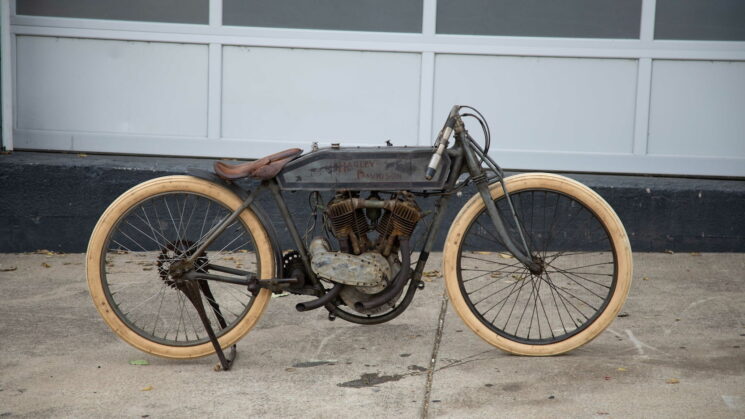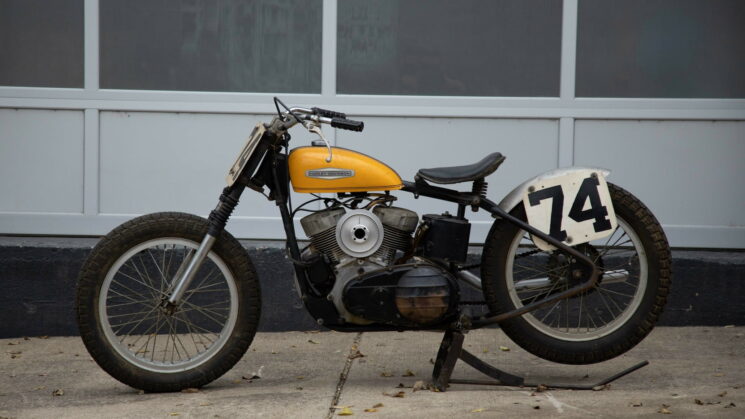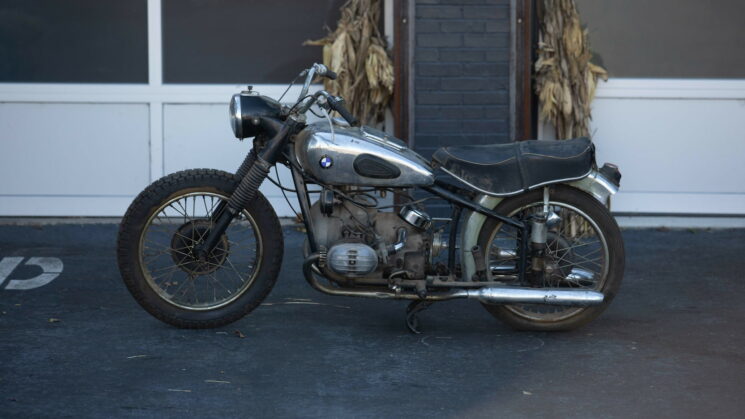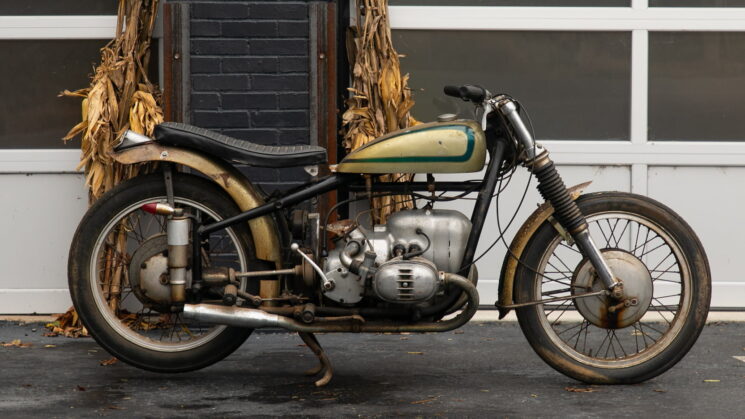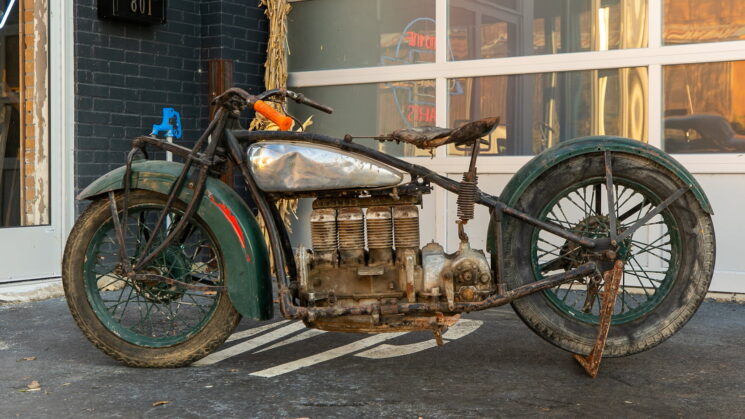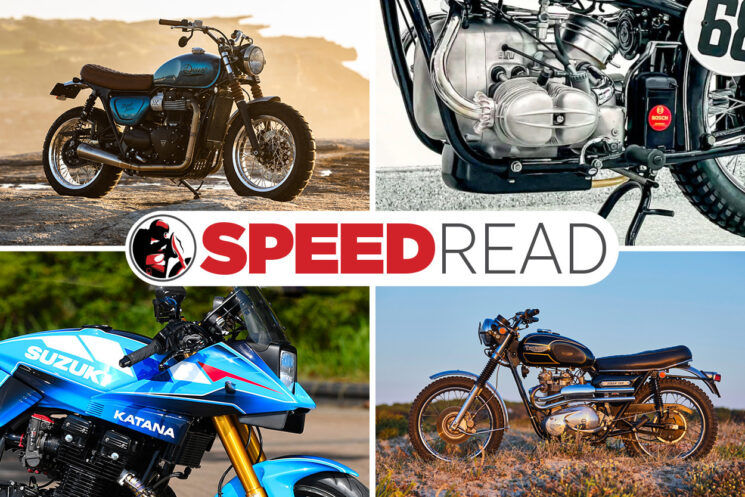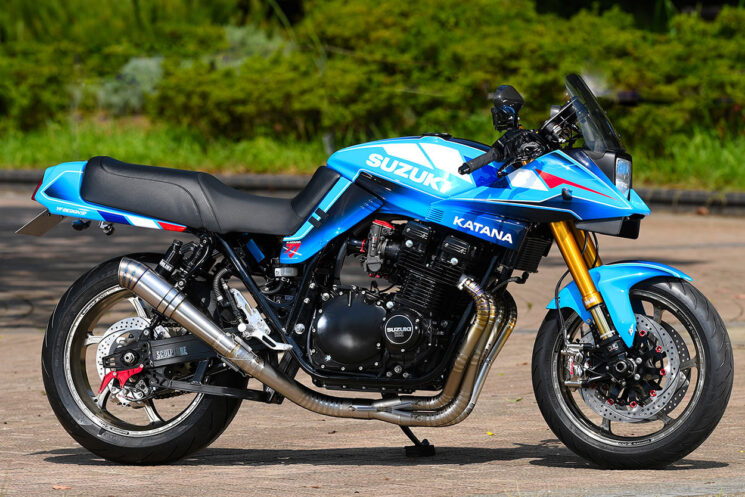Speed Read, January 22, 2023
A stunning Moto Martin restoration headlines this weekend’s round-up. It’s followed by a pair of lightly modded modern Triumph twins, a look at the 2023 Harley-Davidson Nightster Special, and news of Ducati’s electric motorcycle racing plans.
Moto Martin restoration by Cafe Racer SSpirit Stunning race bike lines, a powerful engine and track-focussed running gear—what more could you want? That’s the exact kind of product you got when you ordered a Moto Martin.
Founded by Frenchman Georges Martin in 1972, Moto Martin produced bikes in a similar vein to that of Bimota. They shoehorned the latest, most powerful engines of the day into custom frames, wrapped them in new fairings and garnished them with high-end suspension and braking systems.
All those years ago this is what the original owner, Jorge, did with his
Suzuki Katana 1100 donor bike. He bought the big Kat, and took it to Moto Martin where it underwent a full conversion, with little expense spared. All that remained of the original bike is the engine, carbs and speedo.
Fast-forward to today (after 21,000 miles) and Jorge’s Martin was looking a little worse for wear. Jorge decided to tear the bike down with the intention of starting the restoration himself—but sadly, he was soon diagnosed with ALS and was unable to continue. So he sold the bike to the team at Cafe Racer SSpirit in San Sebastian.
The entire bike was treated to a nut and bolt restoration, with not a single aspect of the bike left untouched. The bronze-welded Chromoly frame, together with Moto Martin’s own suspension and wheels are breathtaking. Everything is perfect, right down to the stunning fiberglass and paint work, which was completed by Sergio at Classic Garage Motorcycles.
The project took more than a year to complete—but Jorge tragically passed away before he could see his old bike in all its glory. The team at Cafe Racer SSprit have done an incredible job bringing the bike back from the brink. We’re sure Jorge is looking down with pride. [
Via]
Triumph Street Twin by Motone The Triumph Street Twin is one of our favorite bikes in the English brand’s modern classic lineup. The approachable 900 cc water-cooled engine, combined with the comfortable ergonomics of the larger Bonneville line, has made the Street Twin a hit around the world.
Motone Customs, the British motorcycle parts and accessories company, are no strangers to the Triumph modern classic lineup. Founded more than a decade ago, Motone specializes in the design and manufacture of accessories and parts, for discerning customers who want their bikes to stand out.
They’ve just finished kitting out a Triumph Street Twin with some of their new parts. It looks so good that it’s hard to believe that the bike is made of bolt-on parts only—no cutting or welding required. This is the genius of Motone; what might have cost an arm and a leg from a one-off custom shop, has been made easy enough for all but the most spanner-shy.
Along with the finned lower engine and gearbox covers (a Motone staple) are the matching bash plate and side covers. There are a slew of other Motone parts which have been bolted on too, but this bike was built to specifically highlight a few new parts.
Most notable are the new flat tracker seat and ‘Nautilus’ exhaust pipes. But eagle-eyed viewers will also spot the new Motone ‘PICO’ LED indicators, which are microscopic but still have full ECE certification.
If you like what you see, and have a Street Twin in need of a no-fuss makeover, check out the
Motone website.
Triumph Thruxton by Purpose Built Moto Another stunning bike in the Triumph modern classic lineup is the
Thruxton 1200. It took the world by storm when it was released in 2016, and the fanfare hasn’t really settled down to be honest. It’s almost perfect out the box—but this also means that you see it everywhere.
A customer with this exact problem rolled his 2016 Thruxton R into the
Purpose Built Moto garage in Burleigh Heads, Queensland, Australia. He wanted to change things up, but not overly so; the team at PBM knew exactly what to do.
“These conversions are always met with a little bit of criticism,” explains shop boss Tom. “The keyboard warriors sing out with ‘why would you ruin the street capability of the bike?’”
“The answer is always the same: it’s our job to deliver a motorcycle the customer gets excited about, loves, and thinks about even when they’re not riding. If our customer wants knobbly tires on a 1200 cc twin with Öhlins suspension, that’s what they’re going to get.”
The Thruxton’s 1200 cc engine is a real peach, so it remains mostly stock—but it wouldn’t be a custom bike build without a soundtrack to match. The factory headers were left alone, but the system was liberated of its catalytic converter, and now exhales through a set of PBM Torpedo mufflers.
Up front is a Purpose Built Moto 7” Flashpoint LED headlight with a custom cowl. The twin clocks have been replaced with a Daytona gauge, sitting in front of an LSL triple clamp, new bar risers, and ProTaper handlebars. Continental TKC80 tires were spooned onto the stock rims (this is a street
scrambler, after all).
The tank and cowl were painted by Nathan at Livin’ Loco (just down the street from the PBM garage) and the new seat was expertly shaped and covered by Timeless Auto Trim. Behind the seat is a looped rear end, capped with Purpose Built Moto’s own 3-in-1 LED lights.
Hats off to the PBM team for once again turning a stock bike into a mean-as-heck custom machine. We just know the customer is stoked. [Purpose Built Moto | Images by ]
2023 Harley-Davidson Nightster Special Harley-Davidson has just unveiled their 120th Anniversary model range. And while there are a few new bikes in the mix, most of the models are just anniversary editions with bold new graphics. The new Nightster Special sits somewhere in the middle.
The Nightster Special comes standard with the same chassis, and same 975T Revolution Max engine as the ‘regular’ Nightster. However, while the engine remains the same, the ergonomics have gotten a slight upgrade. The handlebar risers have been stretched out to 5 inches, and the new handlebars put the grips two inches higher, and an inch closer, to the rider.
This should make the Nightster Special a little more comfortable around town and on longer rides. In that vein, it also gets a pillion seat and passenger pegs—both missing from the standard issue model. New alloy wheels round out the parts spec (admittedly, they do look good).
The Nightster Special is available in Black Denim, Vivid Black, Bright Billiard Blue and Industrial Yellow. All color options get the AMF-inspired striping on the tank, with prices starting at $14,999 in the USA.
It’s a neat set of upgrades for the Nightster, but it’s still left us wanting. A little more differentiation from the stock bike would have been nice—and an announcement of the much-anticipated Bronx would have been even nicer. [
Harley-Davidson Nightster Special]
Ducati MotoE 2023 marks the start of Ducati’s electrification. This year, the Italian marque will be producing an
electric motorcycle for teams to run in the new MotoE championship.
Dubbed the ‘V21L’ by Ducati, production of the 23 bikes for the spec series started in December 2022, with the factory aiming to have them completed by February 2023. Each prototype is assembled by Ducati’s top technicians in the Ducati MotoE Racing Department at their Borgo Panigale factory. With their experience with MotoGP, we’re expecting to see the same attention to detail and flawless craftsmanship in their MotoE bikes.
As you’d expect—along with the electric powertrain and top-shelf suspension and braking components—there’s carbon fiber as far as the eye can see. With this much bodywork, there is plenty of real estate for race liveries. And with the MotoE bikes being so similar, it almost guarantees exciting racing, since it’s all up to the riders.
If you’re interested to see how this all-new electric chapter unfolds, the first race will be at the French Grand Prix on Saturday, May 13th 2023. But what’s almost more interesting, is the possibility of a fully electric Ducati being added to their current lineup. Judging by the words of the company CEO, Claudio Domenicali, it’s only a matter of time.
“The start of production of the Ducati MotoE is a historic moment for our company,” he’s quoted as saying, “which with this project is thoroughly studying the technologies of the future for the world of motorcycling.”
“It is an important area of experimentation, in which we are investing to build know-how so that we will be ready when battery technology should allow the creation of an exciting electric road bike with the weight, performance and range that enthusiasts expect from a Ducati. We are therefore embarking on this new adventure with the aim of developing the people and skills within the company to shape what the character of a future Ducati electric road bike might be.” [
More]
Continue reading...




















